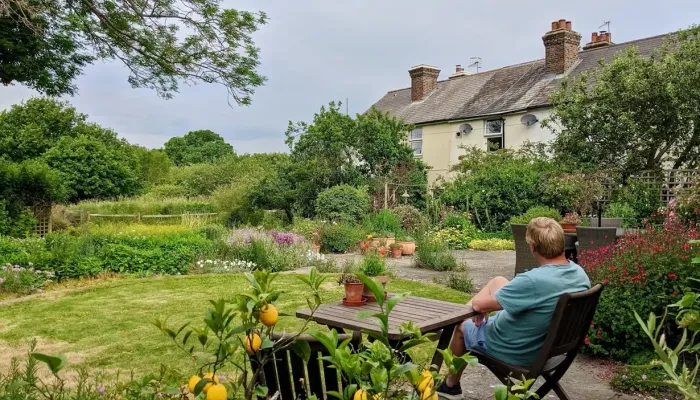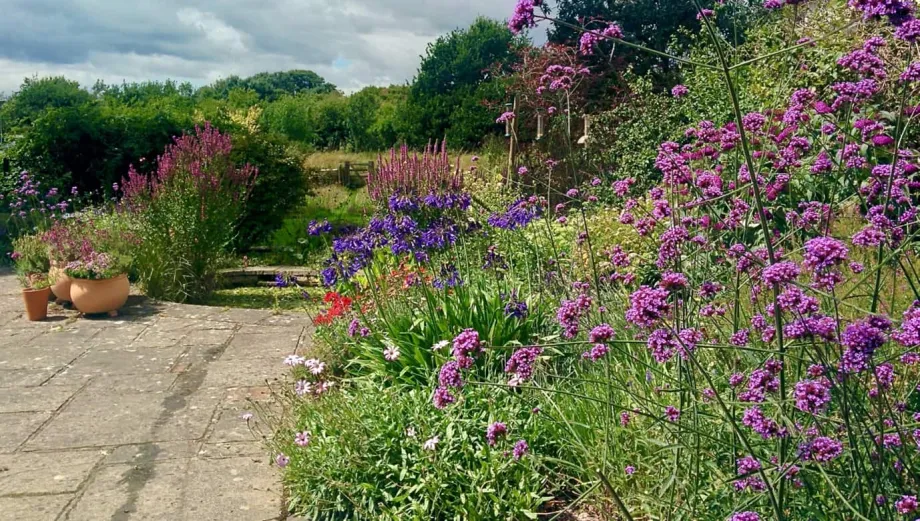
One of our cottage garden style borders in mid-summer. © P Brook
We considered what we wanted from the garden. It had to be manageable as we both worked full-time, but with colour and interest all year. We wanted a paved area where we could eat and relax with family and friends and space for visiting children to run around.
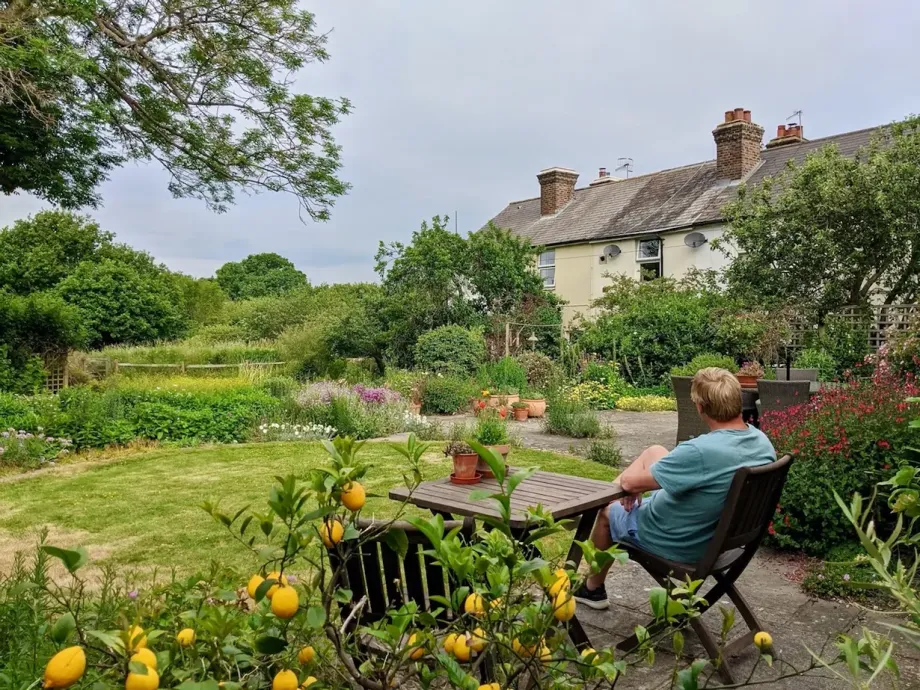
The hard landscaping close to the house is used for entertaining and growing plants in pots. © P Brook
Thinking about the planting was the easy part but we also needed to do some hard landscaping. The ancient ash tree and the fruit trees would remain, so they were our starting point for planning the garden. We decided where we wanted paving, lawn, mixed borders and Peter’s greenhouses. We also decided to have a more formal pond near the house and a sequence of small ponds leading to a wildlife pond at the bottom of the garden. This would be the realisation of Penny’s childhood dream to have a garden that appeared to have a stream running through it!
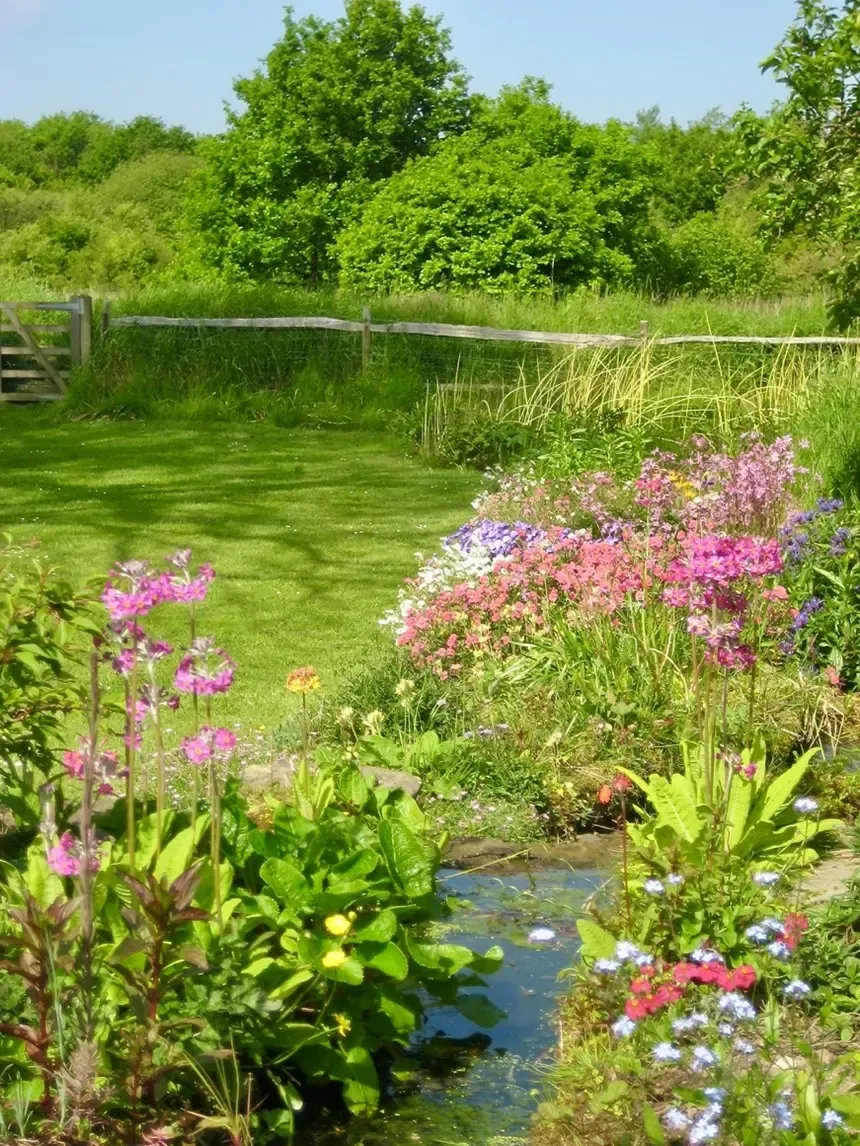
Part of Penny’s “stream” which leads to our wildlife pond at the bottom of the garden. © P Brook
Knowing that we would not have time to keep the whole area looking ‘gardened’, we opted for cottage garden style planting near the house and more informality further away from the house. ‘Borrowed views’ were an appealing idea, much in vogue with garden designers at the time, so we decided to accentuate our rural view by making the gate to the riverbank a focal point. We employed a garden designer who did a fantastic job of creating a layout for the garden based on our rough and ready plan.
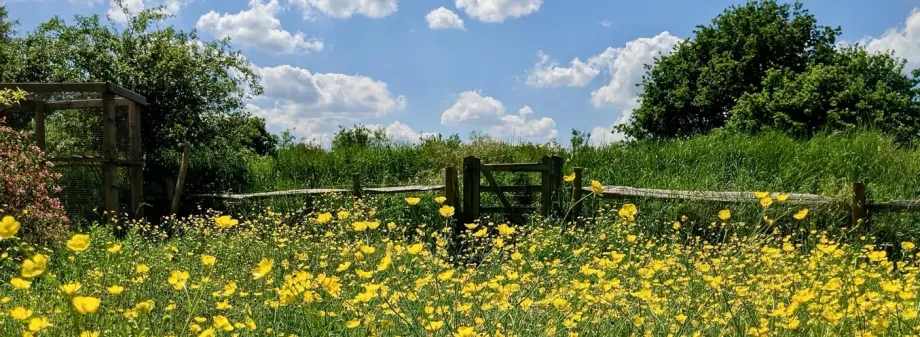
The gate to the riverbank beyond our wilder lawn. © P Brook
At that time, there were just four things we did specifically for wildlife. We created a log pile as habitat for invertebrates and dedicated one pond to wildlife. We replaced leylandii with a native species of hedge to provide food and shelter for wildlife. We spared one leylandii from the cull to provide shelter for birds. However, there was also a happy coincidence of our interests and those of wildlife. Our densely planted mixed borders backed by climbers such as honeysuckle, intended to delight our senses, also provided a feast for pollinating insects. We aimed to have something in flower throughout the year – this is perfect for pollinators. The ash and fruit trees we loved provided food and shelter for a variety of wildlife, as did the less ‘gardened’ areas.
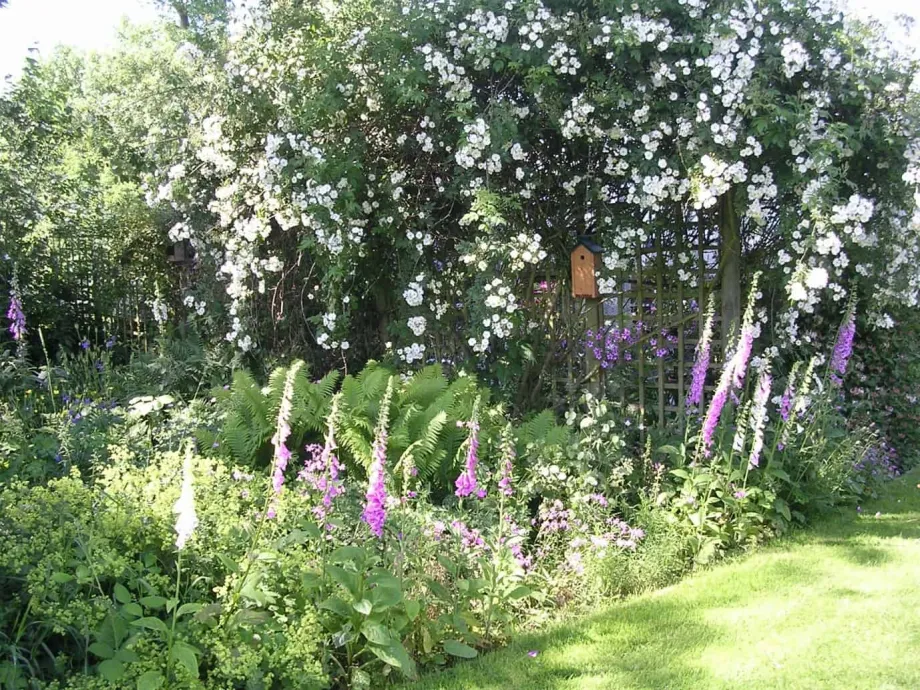
Our greenhouse area is hidden behind trellis covered in climbing rose and honeysuckle. © P Brook
Initially we had grand ideas for colour schemes in different borders but abandoned them when we found that some plants just did not flourish. We now have a cheerful profusion of colour from plants that actually enjoy the growing conditions we give them and will withstand slugs. The garden has also evolved as we have increasingly tried to enhance its value to wildlife because we have been so concerned by its general decline. We aim to show how anyone can make their garden a welcoming place for wildlife and a good place for people to relax and connect with nature. Even if you have a tiny space with room for just a few pollinator-friendly plants and a bird bath, you can still make a difference.
More inspiration
Learn more and find inspiration by coming along to one of our Wild About Gardens events, open gardens, or courses.

